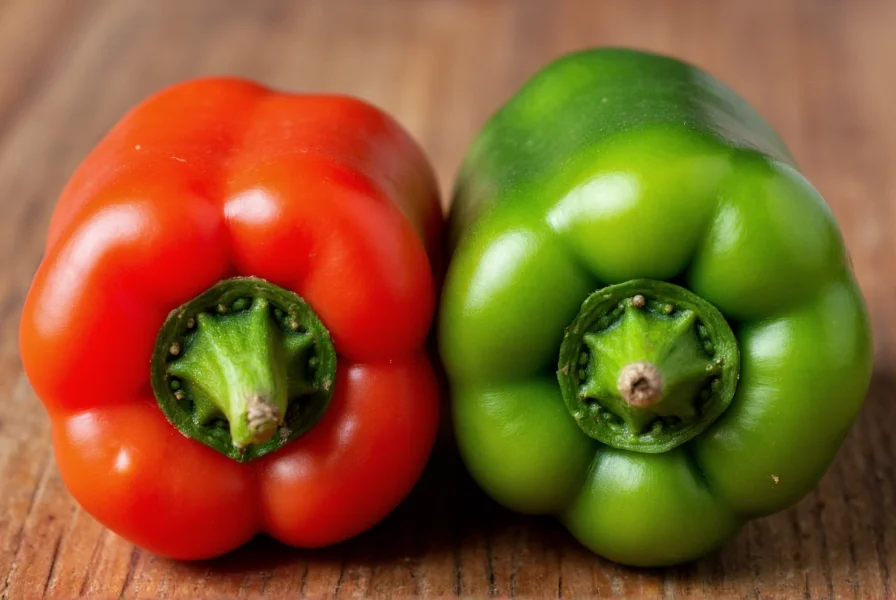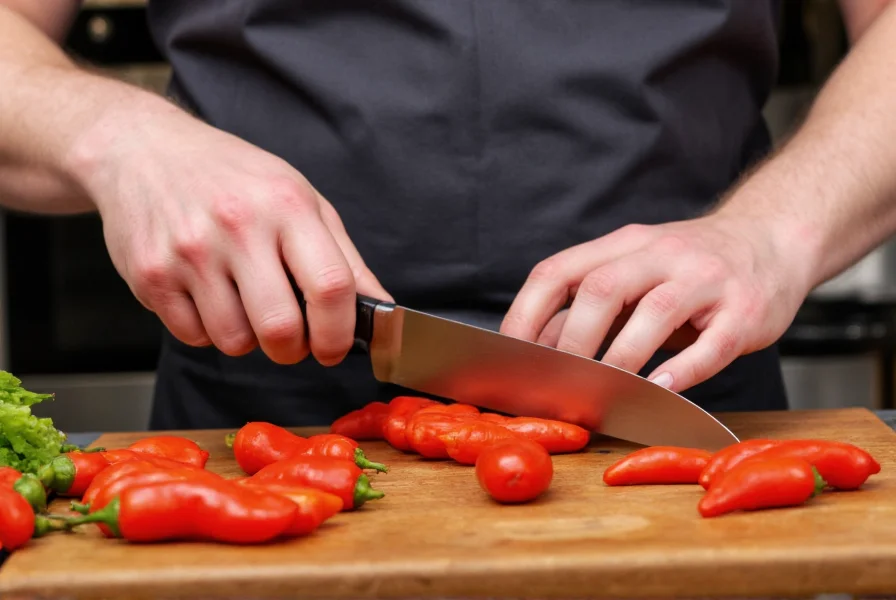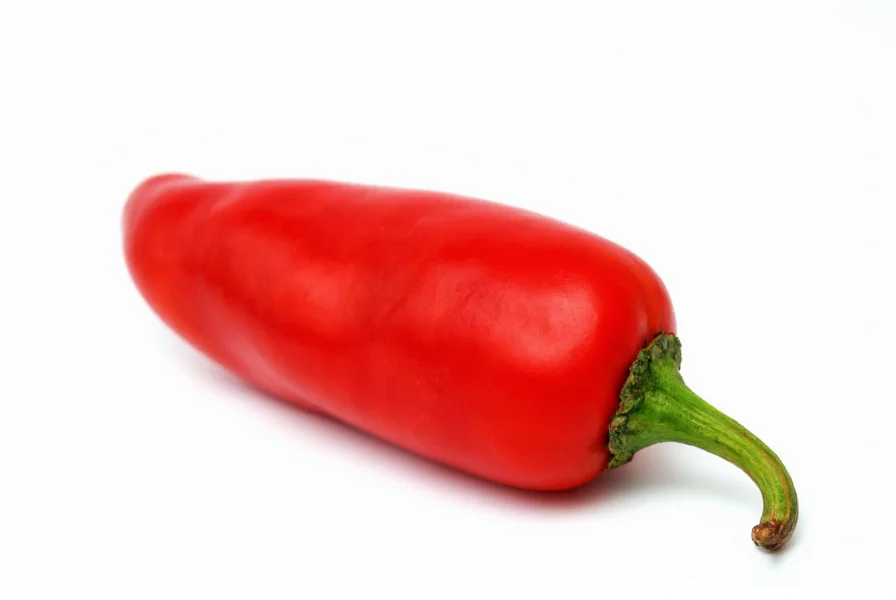Understanding the transformation from green to red reveals why these vibrant peppers deserve a place in your kitchen. As jalapenos mature, their chlorophyll breaks down, allowing carotenoids to develop that distinctive red hue. This natural ripening process doesn't just change color—it fundamentally alters the pepper's chemical composition, enhancing certain flavor compounds while mellowing others.
The Science Behind the Color Change
When jalapeno peppers remain on the plant beyond their typical harvesting stage (usually 70-80 days after planting), they undergo a biochemical transformation. The green chlorophyll pigments degrade, revealing underlying carotenoids like capsanthin and beta-carotene that create the red coloration. This extended maturation period—typically adding 10-14 extra days—allows for increased sugar development and more complex flavor compounds.
Contrary to popular belief, red jalapenos aren't inherently hotter than green ones. The heat level depends primarily on growing conditions and individual pepper genetics rather than color alone. However, because red jalapenos have been left to ripen longer, they often develop thicker walls and more developed placental tissue (where most capsaicin concentrates), potentially delivering more intense heat in certain specimens.

Flavor Profile and Heat Analysis
Red jalapenos offer a nuanced flavor experience that differs significantly from their green counterparts. While both register between 2,500-8,000 Scoville Heat Units (SHU), the red variety typically presents:
| Characteristic | Green Jalapeno | Red Jalapeno |
|---|---|---|
| Primary Flavor Notes | Grassy, vegetal, bright | Sweeter, fruitier, more complex |
| Heat Distribution | More evenly distributed | Concentrated near seeds/ribs |
| Texture | Firmer, crisper | Softer, slightly thicker walls |
| Best Culinary Uses | Fresh salsas, raw applications | Cooked dishes, sauces, roasting |
This flavor evolution makes red jalapenos particularly valuable for cooked applications where their natural sweetness can caramelize. When roasted or incorporated into sauces, red jalapenos develop richer, more rounded flavors compared to the sharper, more vegetal notes of green varieties.
Nutritional Benefits of Mature Jalapenos
As jalapenos ripen to red, their nutritional profile enhances significantly. The extended time on the vine increases certain beneficial compounds:
- Vitamin C content increases by approximately 25% compared to green jalapenos
- Beta-carotene levels rise substantially, converting to vitamin A in the body
- Antioxidant concentration grows with the development of additional carotenoids
- Capsaicinoids reach optimal levels, potentially enhancing metabolic benefits
These nutritional advantages make red jalapenos particularly valuable for those seeking both flavor and health benefits. The capsaicin in jalapenos has been studied for potential benefits including pain relief, improved metabolism, and anti-inflammatory properties.
Culinary Applications and Substitution Guide
Understanding when to use red jalapenos versus green varieties can transform your cooking. Professional chefs often select red jalapenos for:
- Sauces and salsas where deeper flavor complexity enhances the final product
- Roasted pepper applications that benefit from caramelized sweetness
- Vinegar-based preparations where the fruitier notes balance acidity
- Stuffed pepper dishes that showcase the vibrant color
When substituting red for green jalapenos in recipes, consider these guidelines:
- For fresh applications: Use 25% less red jalapeno to account for potentially higher heat concentration
- In cooked dishes: Maintain equal measurements as heat mellows during cooking
- For visual presentation: Red jalapenos provide striking color contrast in dishes
- When preserving: Red jalapenos maintain color better in pickling solutions

Growing and Harvesting Red Jalapenos
Many home gardeners don't realize they can easily grow red jalapenos by simply leaving the peppers on the plant longer. While most commercial growers harvest jalapenos while still green for consistent supply, allowing them to fully ripen offers distinct advantages:
The optimal time to harvest red jalapenos occurs when they develop deep, uniform coloration and begin to show slight wrinkles—a sign of full maturity. This typically happens 10-14 days after they would normally be picked green. Gardeners should monitor plants daily during this transition period, as over-ripening can lead to splitting or decreased quality.
Proper storage extends the life of your red jalapenos. Keep them in the refrigerator's crisper drawer in a paper bag (not plastic) for up to three weeks. For longer preservation, roasting and freezing maintains flavor better than canning for this mature variety.
Common Questions About Red Jalapeno Peppers
Are red jalapenos hotter than green jalapenos?
Red jalapenos aren't necessarily hotter than green ones, but they can be. The heat depends on growing conditions and individual pepper genetics rather than color alone. However, because red jalapenos have ripened longer, they often develop more capsaicin near the seeds and ribs. When tasting, you might perceive red jalapenos as hotter because their sweeter flavor can make the heat more noticeable.
How long does it take for jalapenos to turn red?
Jalapenos typically take 70-80 days to reach maturity as green peppers. To turn red, they need an additional 10-14 days on the plant. The exact timing depends on climate, with warmer temperatures accelerating the ripening process. Gardeners should watch for the color change to begin at the stem end and progress toward the tip.
Can I use red jalapenos in place of green in recipes?
Yes, but with adjustments. For raw applications like fresh salsa, use about 25% less red jalapeno due to potentially higher heat concentration. In cooked dishes, you can generally substitute equal amounts as the heat mellows during cooking. Red jalapenos add a sweeter, fruitier dimension that works particularly well in roasted dishes, sauces, and preserves where their complex flavor can develop fully.
Why do some red jalapenos have corking?
Corking—those light brown, raised lines on jalapeno skin—occurs naturally as peppers mature and expand rapidly, often due to abundant water and nutrients. Contrary to appearance, corking indicates a healthy, vigorously growing pepper and doesn't affect flavor or quality. Many chefs actually prefer corked jalapenos as they often contain higher capsaicin levels. The lines are simply natural stretching of the skin during growth.
How should I store red jalapeno peppers?
Store red jalapenos in the refrigerator's crisper drawer inside a paper bag (not plastic) for optimal humidity control. This method preserves them for 2-3 weeks. For longer storage, roast and freeze them—this maintains flavor better than canning for mature jalapenos. Never store jalapenos in airtight plastic containers, as trapped moisture accelerates spoilage. For immediate use, keep them at room temperature away from direct sunlight for 3-4 days.











 浙公网安备
33010002000092号
浙公网安备
33010002000092号 浙B2-20120091-4
浙B2-20120091-4